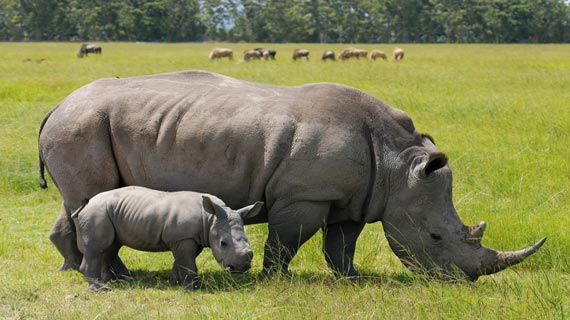
FENCING of the Matopos National Park in Matabeleland South by the Matobo Rhino Protection Initiative (MRPI) is reportedly at an advance stage with an area covering 21,7km in the Whovi Wilderness area of the park having already been fenced.
SILAS NKALA STAFF REPORTER
Most of the original park fence had been vandalised resulting in wild animals straying and exposing themselves to poachers who kill them.
An MRPI spokesperson yesterday said the fencing project was aimed at protecting rhinos from marauding poachers. Last month, two rhinos were killed and dehorned by poachers who were apprehended and arrested.
MRPI project manager Paul Hubbard said: “We have completed 21,7 km of the new bonnox fence in the Whovi Wilderness area. At present, the western and southern boundaries are almost completely fenced.”
Bonnox fence is a mesh-type fence that is quick and efficient to erect because it is produced in 100m long rolls that are self-supporting.
Its height is sufficient to keep in the rhinos and most other game while restricting the access of cattle and other livestock into the park. Hubbard wrote on his Facebook wall that cattle incursions in the fenced area were down and wildlife sightings remained steady.
“National parks has been able to increase the intensity and coverage of their anti-poaching patrols and I believe that security in the park has improved in general despite the awful poaching incident earlier this year,” Hubbard said.
- Chamisa under fire over US$120K donation
- Mavhunga puts DeMbare into Chibuku quarterfinals
- Pension funds bet on Cabora Bassa oilfields
- Councils defy govt fire tender directive
Keep Reading
“We are committed to assisting Zimparks in their magnificent anti-poaching efforts and to complete the fence around the entire national park, funds and resources forthcoming.”
He said the fencing would continue next year.
Fencing of the Matopos National Park comes at a time when elephant and rhino poaching has risen with over 100 elephants killed through cyanide poisoning at the Hwange National Park this year.
Hubbard said the Matopos National Park had gone through a difficult period and was not at the acceptable standard.
The low point of conservation efforts in the park was the poaching of several rhinos in the late 2000s due to the increasing sophistication of poachers’ methods and security problems caused mainly by a lack of fencing around the park.
“Walking with rhinos is a major tourist attraction to the park and helps bring valuable income and employment in the area that directly assists with the conservation and protection of this special area,” Hubbard said.
He said discussions between stakeholders in the local communities, tourism and conservation organisations and Zimparks revealed that a fence was a priority to increase security in the park and to protect the rhino, keep domestic animals out and preserve the environment.
Twitter feedback @silasnkala










